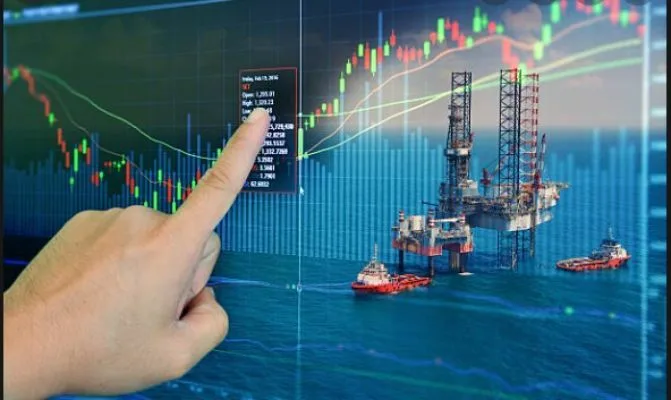The oil and gas industry has been criticised for being outdated or “old school”, but it is moving forward with technological advances.
The oil and gas industry has been experiencing a technology boom in recent years. This technology boom has allowed them to adopt new technology to increase safety, efficiency, and costs. Many of these innovations are due to automation and digitization.
The June Short Term Energy Outlook (STEO), is currently subject to increased uncertainty due to a number of factors including Russia’s invasion of Ukraine. Other factors include a 3.1% and 3.4% growth in global GDP in 2022 and 2023 respectively
The diffusion of new oil and gas production technologies
New oil and gas production techniques are not only being spread in the United States. As price signals drive international oil companies to new frontiers, unconventional hydrocarbon reservoirs are being explored in Canada, South America, and Africa. Tar sands drilling and deep water drilling are the most important of these new production technologies.
Top 5 Trending technologies in the oil and gas industry in 2022
The 2022 outlook in the oil and natural gas industry examines five trends are influencing industry direction.
1. Artificial Intelligence
All levels of the oil-and-gas industry can benefit from artificial intelligence (AI). Both upstream and downstream analysis can identify trends and make predictions.
They also provide strategic recommendations for companies’ positions in the industry. Midstream operations can be supported by AI, which can act as the backbone for responsive operations systems that can all be connected through the IoT. This allows for the optimisation of processes, the operation of machinery at maximum output, eliminating costly errors, and signalling potential damage sources.
The Oil & Gas industry is increasingly using AI and data science for complex problems in the upstream, midstream, downstream and upstream operations.
AI-enabled platforms enable decision-making using insights from cognitive, predictive, and prescriptive analytics. This is how AI can be used to help petroleum engineers and managers in the oil and gas industry discover new production and exploration ideas and increase their ROI.
2. Internet of Things (IoT)
The Internet of Things refers to the transition from an isolated, decentralised and analogue technology to a highly interconnected network of smart devices.
The IoT makes use of the vast expansions in memory and communications technology that have been made possible by cloud computing to centralise information from disparate devices. These devices can now share data with one another and the cloud, which allows for centralised and optimised operations as well as oversight.
The Oil & Gas industry uses the Internet of Things for remote monitoring, production optimisation, worker safety, and remote monitoring.
Real-time data collection is possible through sensors placed in wells, blowout prevention (BOP), choke valves and other devices. This data allows O&G startups to quickly identify defective equipment, allowing field engineers to quickly react and plan.
IoT solutions enable oil and gas facilities to reduce maintenance costs and have detailed visibility into their equipment and processes.
3. Big Data & Analytics
Data analytics and big data are major trends across industries, from finance to healthcare. These technologies allow you to take advantage of the vast new data streams available through the IoT as well as other operational data sets.
Data analysis techniques are used to analyse the data coming in via the IoT at every stage of the workflow to identify opportunities for improvement and streamline processes. Information about market trends can be used to inform business strategies and future investments.
The oil & Gas industry produces large amounts of unstructured data every day. Big data platforms allow data analysts in the industry to draw insights from production data and performance data.
Engineers can also use this data to improve production and protect reservoirs. Historical data from previous operations can be used to train and test AI-driven models and algorithms. The oil and gas industry can derive more value from every day decisions to lower operational costs and industry’s carbon emissions by using big data analytics.
4. Robots and Automation
Technology that improves the safety of workers and the environment at oil and gas sites is a constant goal for companies. Automation and robotics offer the foundation for safe and high-quality working conditions.
Automation and robotics speed up operations, reducing the manpower required, and in turn increasing efficiency and reducing human-induced mistakes.
Oil & Gas operators often work in rugged and complex environments that pose a serious risk to safety. The oil industry has been adapting to robotics and automation solutions in order to reduce the risk of accidents at work as well as increase productivity. Robots can also be used for inspection, surveying and industrial automation in oil refineries and rigs.
5. Cloud Computing
Cloud computing allows data to be stored and processed on remote servers. This frees up valuable local memory and computing power.
Oil & Gas industry produces a lot of data every day. Cloud technology and software applications can improve oil & gas efficiency and security as well as scalability. It also facilitates digital transformation.
As-a-service platforms, which include platform, storage, infrastructure and data, are cloud-native tools that enable advanced analytics and visual dashboards.
Extended Summary
Despite having many technologies that enable advanced connectivity at its disposal, the oil & gas sector has yet not fully realized the full potential of connectivity.
Estimates show that the oil and gas sector has yet to fully realise the potential of connectivity’s capabilities, despite having many of the technologies enabled by advanced connectivity.
Technology is constantly evolving and has the potential to transform businesses and provide greater value. These technologies include devices that enhance connectivity, linking to the global internet and smaller subnetworks in the case of the oil and gas industry.







